Revive Your Manotick Garden After Absence: Spring Pro Plan
Quick Spring Garden Revival Plan:
- Assess: Check soil, plants, and debris levels.
- Clean: Remove winter debris and tackle early weeds.
- Amend Soil: Boost garden beds with compost.
- Plant: Add hardy (Zone 5) perennials and shrubs.
- Water & Mulch: Water wisely and apply mulch.
Need help waking up your garden? Request your free quote today!
Welcome Back to Your Manotick Garden! (It Missed You)
Ah, spring in Manotick! The Rideau River is flowing freely again, the Ottawa air is warming up, and you're finally stepping back out into your yard. After a long winter hibernation, let's be honest – your garden might look a little… *unenthusiastic* to see you. Maybe it’s looking less like a carefully curated landscape and more like it threw a small, slightly messy party while you were cozy inside. Don't worry, it's completely normal! Those flower beds might seem overgrown, the lawn a bit patchy, and perhaps a few unexpected weeds have made themselves right at home, maybe even waving hello from near your favourite perennials.
Think of it this way: your garden missed your touch! It’s just waiting for a little TLC to bounce back. That initial survey of spring *gardening* tasks can feel daunting, we get it. Seeing perfectly manicured lawns over in nearby Kars or Greely doesn't always help either! But take a deep breath. This guide is your friendly neighbourly nudge, here to walk you through reviving your outdoor space step-by-step. Let's gently wake up your Manotick garden together and get it ready for a beautiful season ahead. For local expertise, check out the Master Gardeners of Ottawa-Carleton resource page.
Step 1: The Great Garden Assessment (Don't Freak Out, Just Look)
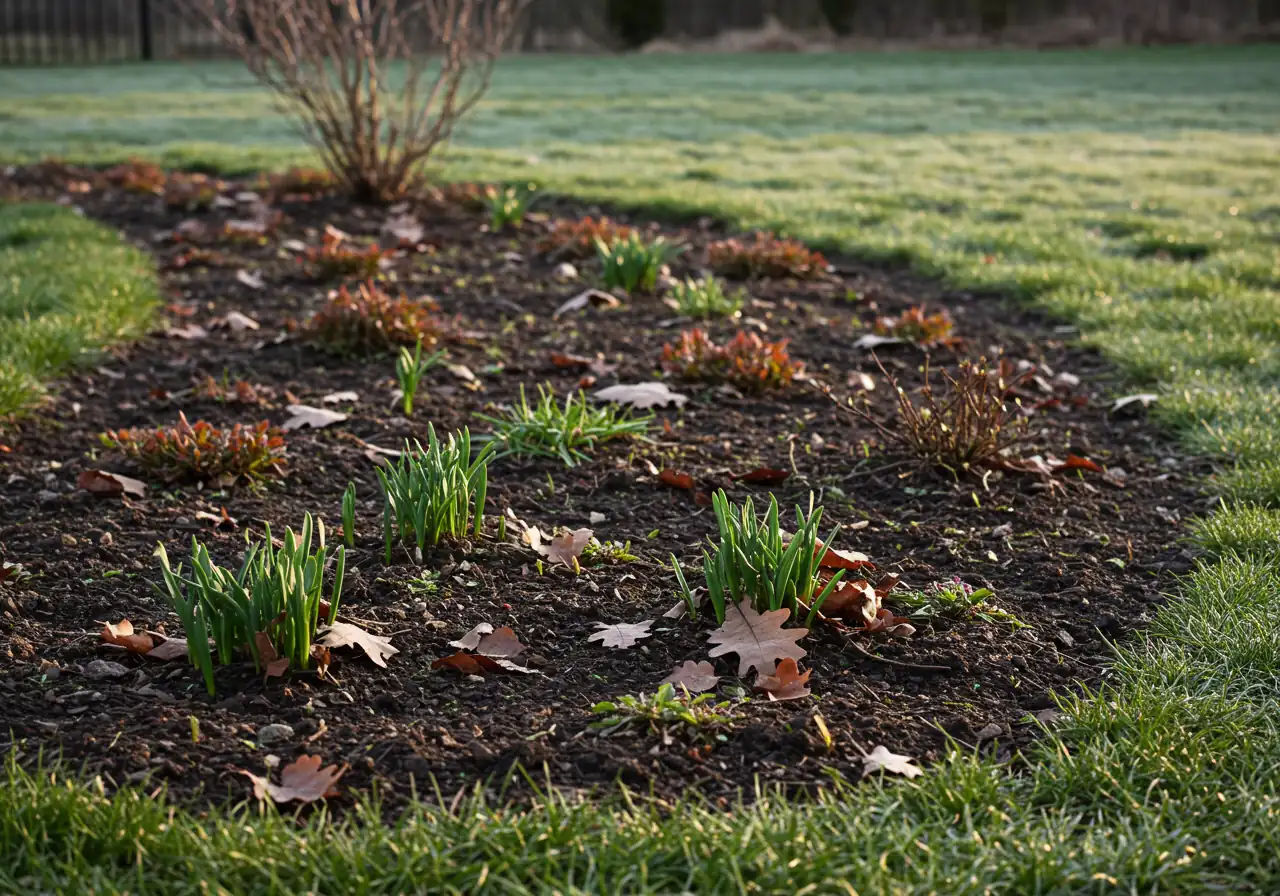
Okay, let's start with the easiest part: just looking. Seriously! Before you grab a single tool or feel overwhelmed, take a relaxed walk around your Manotick property. This isn't about judging; it's about gathering intel, like a friendly garden detective. Think of this as your initial *landscaping* reconnaissance mission. Grab a notepad or your phone to jot down observations – no pressure, just notes.
First, get the big picture. From your deck or window, what catches your eye? Are there obvious piles of leaves or winter debris? Any glaring bare patches in the lawn? Maybe some *shrubs* looking a bit squashed by snow?
Now, let's zoom in. Take a closer look at your *flower beds* and garden areas:
- Soil Check: How does the ground look and feel (if it’s not frozen solid!)? Ottawa region soil can vary, often being clay-heavy, which holds moisture but can compact easily over winter. Or you might have sandier pockets, common in areas near the river like parts of Manotick or down towards Osgoode. Is water pooling anywhere, suggesting poor *drainage*? Is the soil cracked or pulling away from edges? Note it down. Learn more about managing water runoff from the Rideau Valley Conservation Authority (RVCA).
- Plant Patrol: Examine your *perennials*, shrubs, and *trees*. Look for broken branches, signs of critter nibbling, or dead-looking stems. *Important:* Don't declare something dead too soon! Many plants, especially perennials, look completely lifeless in early Ottawa spring but will surprise you later. If you have older shrubs looking worse for wear, don't despair. Sometimes they just need a good reset. You can find helpful advice on Osgoode shrub renovation pruning in spring to tackle this later. For those really tough cases, learning about techniques like Metcalfe renovation pruning to revive old shrubs might offer solutions. And for general tips, exploring resources like these Kenmore shrub renovation pruning tips can be beneficial before you start cutting. Also, make a mental note of plants that seemed particularly stressed last summer – knowing how they weathered the heat can inform their care this year, sometimes requiring specific recovery strategies similar to those needed for Osgoode garden revival after summer heat stress.
- Hardscaping Health: Check pathways, patios, fences, and retaining walls. Has the winter frost caused any shifting, cracking, or heaving?
- Weeds & Debris: Spot any early *weeds* bravely popping up? Note the type if you can. Tally up the general yard waste – fallen leaves clumped in corners, twigs scattered on the lawn. For details on yard waste collection in Ottawa, visit the City of Ottawa Green Bin program page.
That's it! You've completed your Great Garden Assessment. See? No freaking out required. You now have a simple *checklist* (even if it's just scribbled notes) of what needs attention. This information is your roadmap for the next steps in your spring *gardening* adventure. If looking over your list feels a bit daunting, remember you don't have to do it all alone. Exploring our comprehensive garden care services can offer professional support right when you need it.
Step 2: Operation Clean Sweep: Clearing the Canvas
Okay, assessment complete! You know *what* needs doing. Now it's time for Step 2: Operation Clean Sweep: Clearing the Canvas. Think of this as prepping your garden masterpiece – you need a clean canvas before you can start painting (or planting!). Let's roll up those sleeves and gently tidy things up.
1. Banish the Winter Blues (aka Debris Removal):
First things first, let's deal with the leftovers from winter. Grab your rake and gloves!
- Leaf Patrol: Rake up those soggy leaves that have been hiding under the snow. Don't forget corners where they pile up! Wet leaves can smother emerging *perennials* and your lawn.
- Twig Takedown: Collect fallen twigs and branches. Larger branches might need pruning shears or a small saw (safety first!).
- Check Your Beds: Gently remove excess leaf litter from *flower beds*. A little bit is okay as mulch, but thick layers can prevent water and warmth from reaching the *soil* and your plants' roots.
- Eco-Tip: Got a compost bin? Awesome! Most leaves (unless diseased) and small twigs make fantastic compost. If composting isn't your jam, use your municipal yard waste bags. Just get it off the main garden areas. Dealing with a *lot* of debris, like after a harsh Ottawa winter? It can be quite the task. If the amount feels overwhelming, remember there are options. For instance, whether you have a smaller yard needing a basic tidy-up or a larger property common in areas like Marionville requiring more extensive work, professional help is available. You can explore options like a general Ottawa property cleanup service or services tailored for specific needs, such as a dedicated Marionville property cleanup service or even Metcalf property cleanup service. For comprehensive care, consider our general property clean up services.
2. The Weed Wipeout (Early Bird Gets the Weed!):
Yes, those pesky *weeds* are probably already making an appearance. Tackling them now is *way* easier than later when they've taken over.
- Know Your Enemy: Common Ottawa area weeds popping up now might include dandelions (everyone knows these!), chickweed (small leaves, tiny white flowers), and maybe even some early creeping charlie (scalloped leaves, spreads like crazy).
- Timing is Key: Try to weed after a light rain or watering. The *soil* is softer, making it easier to pull the entire root out. Getting the root is crucial – leaving bits behind means they'll just grow back, laughing maniacally (okay, maybe not laughing, but they *will* return).
- Tools vs. Hands: For many weeds, hand-pulling works great. For stubborn ones with deep taproots (hello, dandelions!), a weeding tool (like a fishtail weeder) can be your best friend.
- Be Thorough: Get down close to your *flower beds* and peek under *shrubs*. Weeds love hiding!
- City vs. Suburb: Cleaning up weeds in a dense Nepean neighbourhood might differ from tackling vast patches out near Embrun. If you're facing a jungle, professional help might be the way to go. Many companies offer specific weed management as part of their comprehensive garden care services, including targeted solutions like an Embrun property cleanup service or even a specialized city garden clean up service for tighter urban spaces. We also offer cleanups in Marionville and Metcalf.
| Weeding Method | Pros | Cons |
|---|---|---|
| Hand-Pulling | Precise, gets roots (if soil is moist), no chemicals | Time-consuming, physical effort, less effective on large areas |
| Hoeing | Faster for surface weeds, good for large areas | Doesn't always get deep roots, can disturb soil/mulch |
| Mulching | Suppresses new weeds, conserves moisture, improves soil (organic) | Doesn't kill existing weeds, needs replenishing |
| Targeted Herbicides | Effective on stubborn weeds | Potential environmental impact, risk to desired plants, requires careful application |
3. Pruning Primer (Just the Basics!):
Okay, let's talk *pruning*, but keep it simple for spring cleanup. We're not reshaping the whole garden yet!
- The 3 D's: Focus only on removing wood that is clearly *Dead, Damaged, or Diseased*. Dead branches are often dry and brittle, snapping easily. Damaged wood might be cracked or broken from snow/ice. Diseased wood might look discoloured or have fungal growth. Clean cuts are important – use sharp bypass pruners for smaller stems.
- Hold Your Horses: *Resist* the urge to heavily prune spring-flowering *shrubs* like Forsythia or Lilacs *before* they bloom. You'll cut off this year's flowers! Wait until after they finish flowering to prune those.
- Perennial Patience: For *perennials*, you can trim back any dead stems and foliage left from last year, cutting them close to the base. But be gentle – new growth might be emerging!
Phew! Look at that! You've cleared away the clutter, tackled the early weeds, and snipped out the obvious dead stuff. Your Manotick garden canvas is now prepped and looking much happier. Give yourself a pat on the back – you've completed a major step in waking up your beautiful outdoor space!
Step 3: Soil Revival: Building a Healthy Foundation
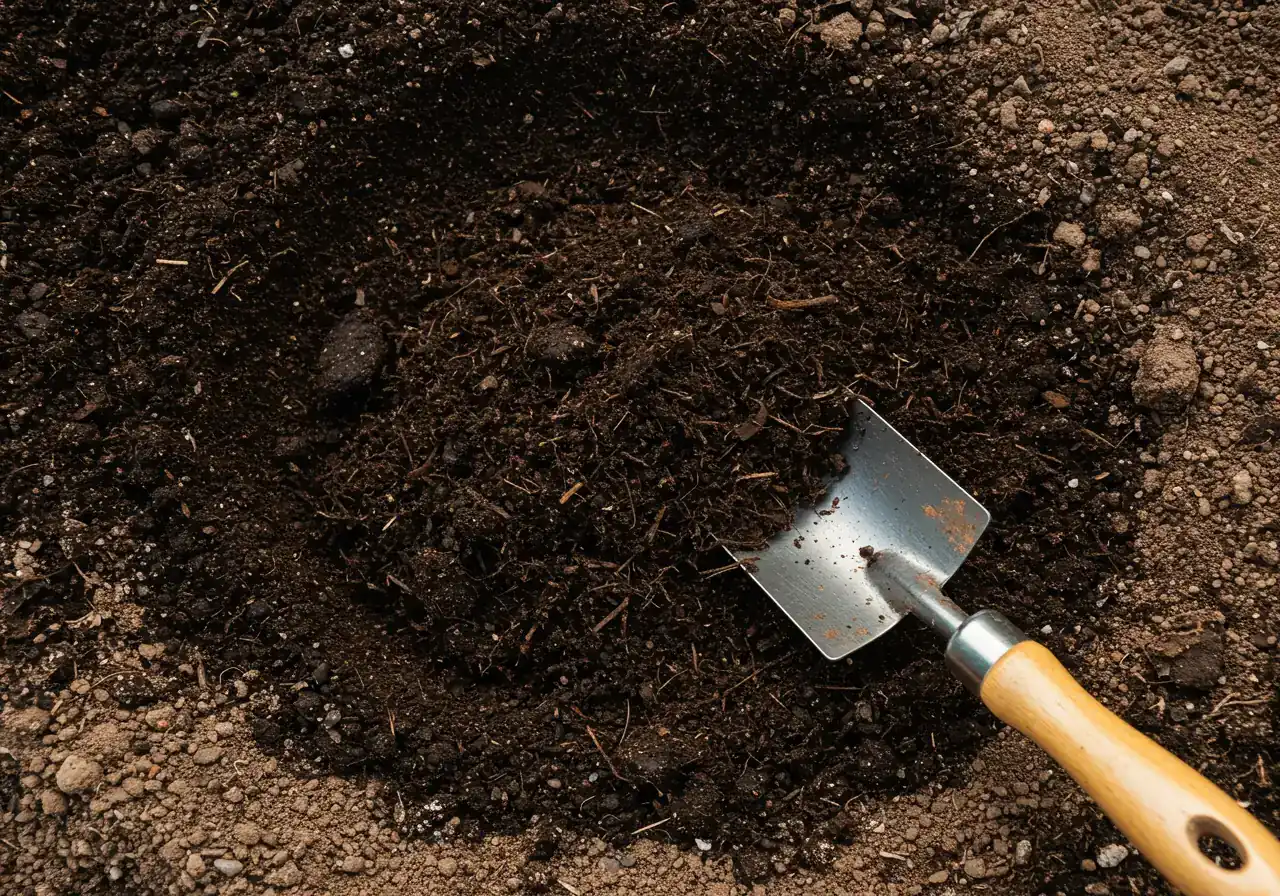
Okay, you’ve swept the stage clear in Step 2! Now for the unsung hero of every thriving garden: the soil. Welcome to Step 3: Soil Revival: Building a Healthy Foundation. Think of your soil as the pantry and sponge for your plants – it needs to be stocked with goodies and able to hold onto moisture just right. Without happy soil, even the prettiest *perennials* will just sulk.
Why All the Fuss About Dirt?
Healthy soil is teeming with life! Tiny organisms, worms, and fungi work together to break down nutrients, create air pockets, and manage water. Good soil structure allows roots to grow deep and strong, finding the food and water they need. Poor soil, on the other hand, can lead to weak plants, drainage problems, and just general garden grumpiness. Seriously, a plant in bad soil is like us trying to run a marathon on just water crackers – not gonna end well!
Understanding Ottawa's Earthy Personality
Here in the Ottawa region, we often deal with soil that leans towards heavy clay. You know the stuff – sticky when wet, hard as concrete when dry. This is common in areas like parts of Nepean. Clay soil holds nutrients well but can suffer from poor *drainage* and compaction, making it tough for roots to breathe. Alternatively, some spots, perhaps closer to sandy deposits like you might find near Greely, can have soil that drains *too* quickly, letting water and nutrients slip away before plants can grab them. Your specific yard might even be a mix! The key takeaway? Most native Ottawa soil benefits greatly from a little boost.
Using Compost
Compost is decomposed organic matter and is arguably the best all-around soil amendment. It improves structure in both clay and sandy soils, adds slow-release nutrients, and boosts beneficial microbial life. It's typically dark, crumbly, and has an earthy smell. Ideal for mixing into beds or top-dressing.
Using Well-Rotted Manure
Manure (cow, sheep, poultry) is rich in nutrients, especially nitrogen, but *must* be well-rotted or composted before use. Fresh manure can burn plant roots. Like compost, it improves soil structure. Ensure it's aged for at least 6 months to a year before applying near plants.
The Magic Ingredient: Organic Matter
How do we fix tricky soil? The answer, thankfully, is usually the same magical ingredient: *organic matter*. This is the decomposed goodness from things like plants and manures. Think compost, well-rotted manure, shredded leaves (leaf mold), or sea compost.
- For Clay Soil: Organic matter acts like tiny wedges, breaking up the heavy particles. This improves *drainage* and allows air to reach the roots. It makes the soil fluffier and easier to work with. No more wrestling with sticky mud!
- For Sandy Soil: Organic matter acts like a sponge, helping the soil hold onto precious water and nutrients that would otherwise wash away.
Boosting Your Beds
The best time to improve your soil is before planting. Digging in a generous layer (a few inches) of compost into your *flower beds* or vegetable garden works wonders. For existing beds with established *shrubs* and perennials, you can carefully 'top dress' by spreading a layer of compost around the plants (avoid piling it against stems). This goodness will gradually work its way down with watering and worm activity. Investing time in amending your soil is crucial for long-term garden health. If tackling large areas feels like too much digging, understanding professional soil preparation methods for Ottawa gardens might offer insights or alternatives. Adding amendments is often a key part of a thorough Ottawa garden clean up service, ensuring beds are perfectly prepped for planting season.
Should You Test Your Soil?
While not always essential for basic *gardening*, a simple soil test can tell you about your soil's pH (acidity/alkalinity) and major nutrient levels. You can buy DIY kits or send samples to a lab. Knowing your pH helps you choose plants that will thrive naturally or tells you if you need amendments like lime (to raise pH) or sulfur (to lower it). It’s like a little check-up for your dirt!
Composting: Your Personal Soil Factory
Want a free, steady supply of organic matter? Start composting! It’s easier than you think. Layer ‘greens’ (like fruit/veg scraps, coffee grounds, grass clippings) with ‘browns’ (like dried leaves, twigs, cardboard) in a bin or pile. Keep it slightly moist, turn it occasionally, and nature does the rest, turning waste into black gold for your garden. What about all those leaves and clippings from your big spring tidy? If composting isn't your style or you have too much volume, a reliable Ottawa property cleanup service can efficiently manage the yard waste for you.
Don't Forget the Lawn!
Good soil isn't just for *flower beds*. Your lawn needs a healthy foundation too. Poor, compacted soil is a major cause of patchy, unhappy grass. Aerating and top-dressing with compost can significantly improve lawn health. And if you're dreaming of a brand-new carpet of green, remember that excellent soil preparation is absolutely vital before considering new lawn care techniques or lawn sod installation in Ottawa. Building healthy soil takes a bit of effort upfront, but it's the single best investment you can make for a beautiful, resilient Manotick garden. It’s the foundation upon which all your *landscaping* dreams are built! Remember, if you're engaging professional help for any major soil work or garden services, it's always a good practice to review their service terms and conditions so everyone is on the same page. Now, let's get ready to plant!
*Conceptual representation of potential impact for effort invested.
Step 4: Planting Power: Adding Life and Colour
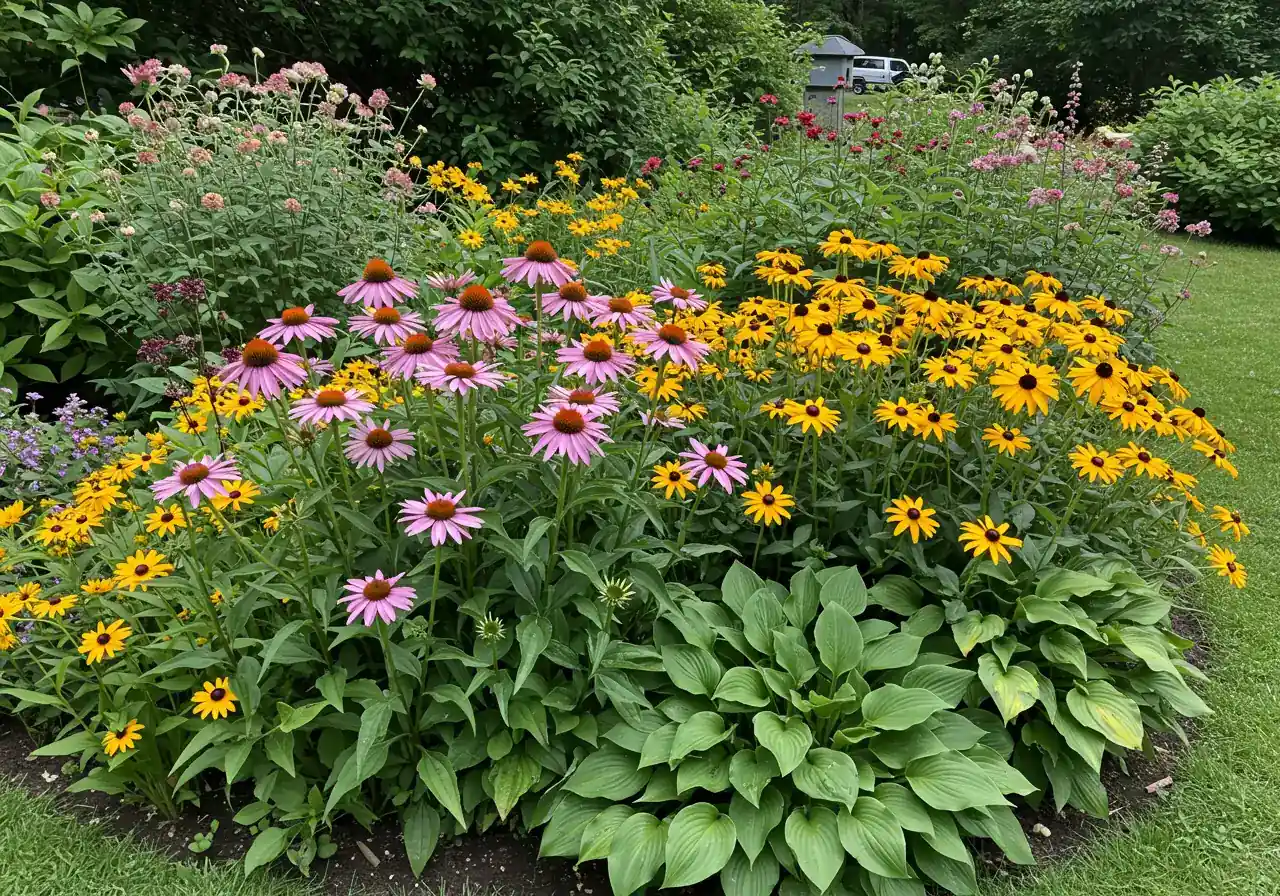
Alright, the stage is set, the soil is singing (well, maybe humming contentedly), and now for the really fun part: adding the stars of the show! Welcome to Step 4: Planting Power: Adding Life and Colour. This is where your Manotick garden truly comes alive with vibrant blooms, interesting textures, and maybe even a plant that makes the neighbours say, "Ooh, what's *that*?" Find us easily via our Google Business Profile.
Choosing Wisely for Ottawa Weather
First things first: Ottawa is generally considered *Hardiness Zone 5* (sometimes dipping into 5a or nudging 5b depending on microclimate). What does that mean? It means our plants need to be tough cookies to survive our chilly winters! When selecting *perennials* (plants that come back year after year), *shrubs*, or even *trees*, always look for ones rated for Zone 5 or lower (like Zone 4 or 3 – those are extra hardy!). Trying to baby a Zone 6 plant through an Ottawa winter is often asking for heartbreak, like trying to wear shorts during a January snowstorm.
Consider going native! *Native plants* are species that naturally evolved right here in our region. They're already perfectly adapted to our climate and soil, often requiring less water and fuss once established. Plus, they're fantastic for supporting local pollinators like bees and butterflies! Think beauties like Purple Coneflower (Echinacea), Black-Eyed Susans (Rudbeckia hirta), or Serviceberry *shrubs*. Local nurseries near Manotick, Kars, or Richmond are excellent resources for finding hardy and native options, and their staff usually have great advice for our specific area.
Remember to match plants to their location needs: sun lovers in sunny spots, shade dwellers under trees. And think about their mature size – that cute little shrub might want to become a space hog later! Ensure your planting area is ready; success relies on that foundational step of proper soil preparation.
Getting Your Hands Dirty (The Right Way!)
Planting isn't rocket science, but a few tips help your new green friends settle in:
- Dig Right: Dig a hole roughly twice as wide as the plant's pot, but generally no deeper than the pot itself.
- Loosen Up: Gently tease apart any circling roots at the bottom of the root ball. This encourages them to spread out into their new home.
- Position & Backfill: Place the plant in the hole, ensuring the top of its root ball is level with the surrounding *soil*. Backfill with the soil you removed (or amended soil). Gently firm the soil around the base.
- Water Well: Give your newly planted friend a good, deep drink of water to settle the soil and hydrate the roots.
Got established *perennials* like Hostas or Daylilies looking a bit crowded? Spring is often a great time to divide them! Carefully dig up the clump, gently separate it into smaller sections (each with roots and shoots), and replant. Bonus: free plants!
Thinking Seasons Ahead
Aim for *seasonal interest*. Plan for a sequence of blooms from spring bulbs and early perennials, through summer showstoppers, into fall colours from foliage or late bloomers like Asters. Don't forget textures and winter structure from ornamental grasses or sturdy *shrubs*. Need help visualizing or getting those beds perfectly prepped after winter? A thorough Ottawa yard cleanup service (covering Manotick too!) can handle the heavy lifting, making way for your new additions. We also offer specialized services like Marionville yard cleanup service and Metcalf yard cleanup service. If your planting plans involve areas near the street, remember there might be specific rules regarding clearing boulevards or city property edges.
Planting adds personality and charm to your home. And remember, keeping your new investments happy requires care. Regular watering, weeding, and feeding are part of ongoing garden maintenance that ensures your garden thrives all season long. Feeling inspired but need a hand with a bigger planting project? Just get in touch with us – we love helping bring garden visions to life! Our team is happy to provide feedback on estimates you may have received elsewhere.
Step 5: Smart Watering & Mulch Magic
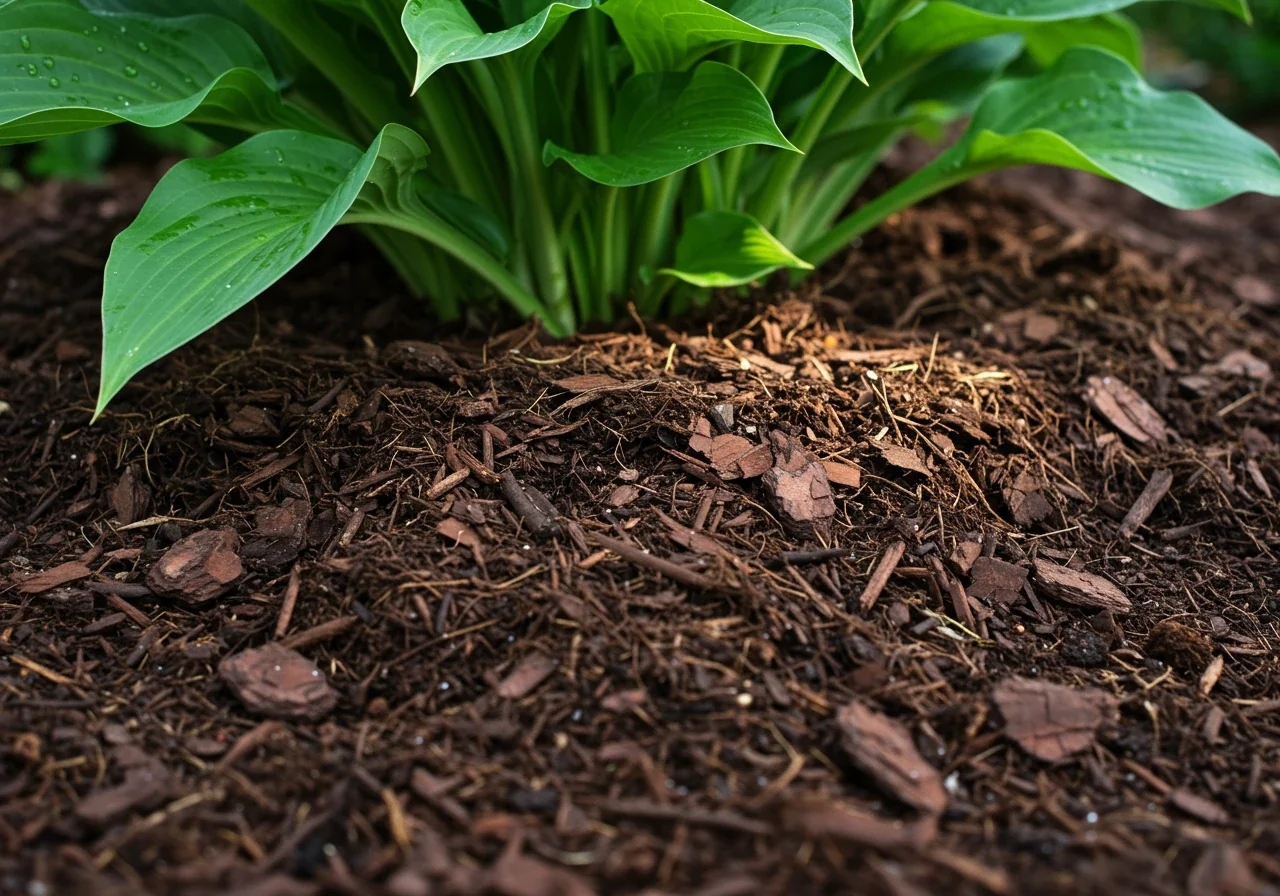
Okay, your new plants are in the ground (hooray!), and your established green buddies are waking up. Now, let's talk about keeping them happy and hydrated without turning your Manotick yard into a swamp. Welcome to Step 5: Smart Watering & Mulch Magic – the dynamic duo for a thriving garden!
Water Wisely: Less is Often More (Especially in Spring!)
You might think your plants are parched after planting, but hold your hose! Ottawa springs can be quite damp. Before you water, do the finger test: stick your finger about two inches into the soil near your plants. Is it damp? Then hold off! Overwatering can be just as bad as underwatering, leading to root rot and unhappy plants.
When you *do* water, aim for deep and infrequent rather than shallow and often. This encourages roots to grow deeper, making plants tougher during dry spells. Water the base of the plants, not the leaves – this helps prevent fungal diseases (nobody likes spotty leaves!). Early morning is the best time to water, reducing evaporation and giving leaves time to dry before nightfall.
Want to be an eco-hero? Consider installing a rain barrel! Collecting rainwater is free, fantastic for your plants (they love its natural softness), and reduces runoff. Smart watering is a key part of sustainable garden maintenance, and it saves you time and money. Even in denser areas, like managing gardens in Barrhaven, thoughtful watering makes a big difference, something often covered by a dedicated city garden maintenance service. Our approach, which you can read more about on our About Us page, always emphasizes water conservation.
Mulch: Your Garden's Best Friend
Now for the magic! Mulch is like a cozy blanket for your soil, and it does *so* much good:
- Holds Moisture: It acts like a sponge, slowing evaporation so you water less often. Yay!
- Smothers Weeds: A good layer makes it harder for pesky weeds to sprout. Double yay!
- Regulates Temperature: Keeps soil cooler in summer and warmer in winter, protecting roots.
- Looks Great: Gives *flower beds* a tidy, finished look.
What kind of mulch should you use? Common choices include shredded bark or wood chips, which break down slowly. Shredded leaves (nature’s free mulch!) or straw work well too, especially in veggie gardens. You can even use compost as a nutrient-rich mulch. Need help choosing the perfect topping for your garden beds? Check out our guide on material selection.
Apply mulch about 2-3 inches deep around your *perennials* and *shrubs*. But *very important*: keep it pulled back an inch or two from the base of plants and tree trunks. Piling mulch right up against stems (we call those dreaded "mulch volcanoes"!) invites pests and rot. Professional mulching and edging services always ensure this gap for plant health.
By watering smartly and using mulch effectively, you're setting your Manotick garden up for a season of healthy growth and beauty, using resources wisely. High five!
Your Spring Revival Timeline
Step 1: Assess
Early Spring: Walk the yard, note conditions, identify issues.
Step 2: Clean Sweep
As soon as ground isn't soggy: Rake debris, pull early weeds, light pruning (dead/damaged).
Step 3: Soil Revival
Before planting: Amend beds with compost/organic matter.
Step 4: Plant Power
Late April/May (check frost dates!): Plant hardy perennials & shrubs.
Step 5: Water & Mulch
After planting: Water deeply, apply 2-3" mulch around plants (not touching stems).
Quick Wins for Instant Garden Gratification
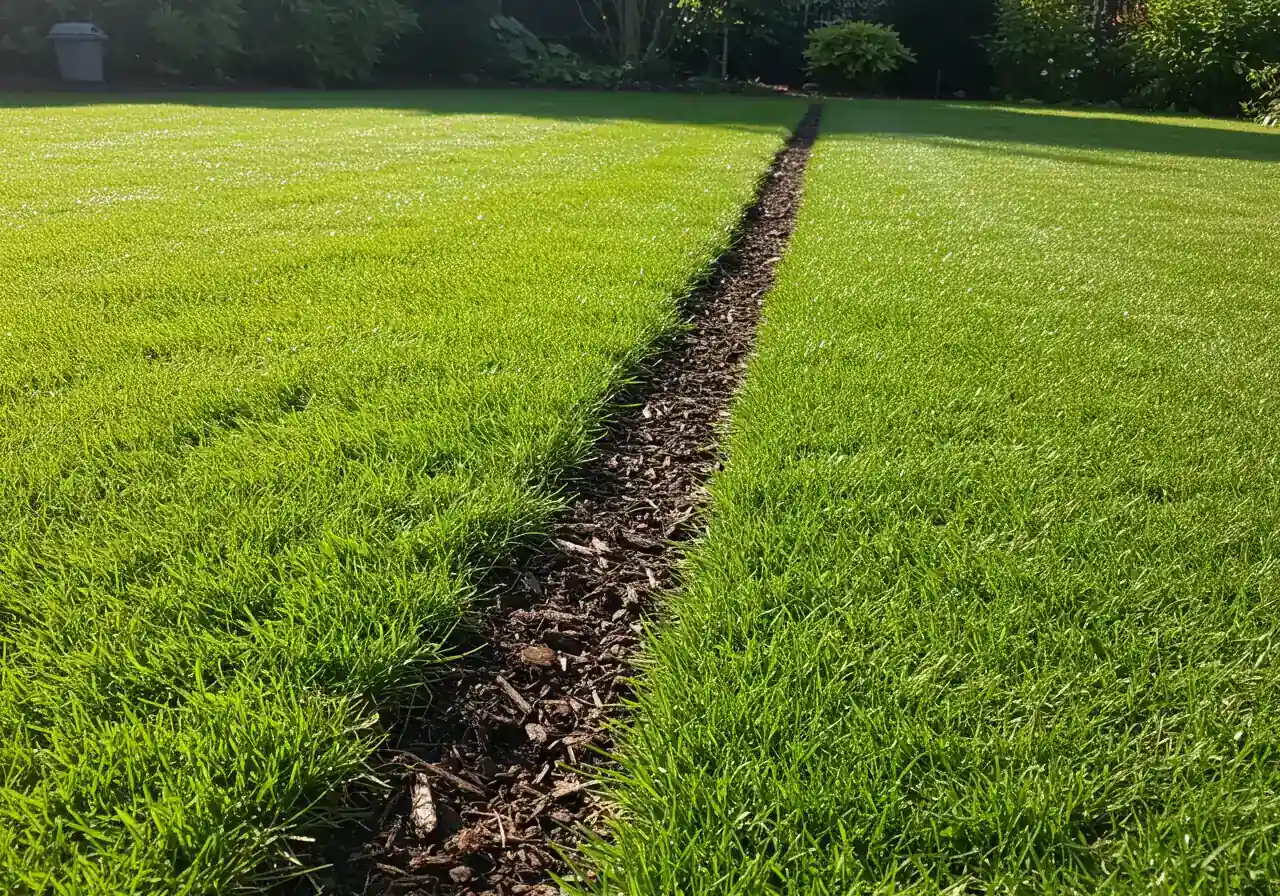
Feeling swamped by spring *gardening* tasks? Need a little visual victory *now* to keep your spirits high? Totally understandable! Here in Ottawa, sometimes you just need that quick win. Try these super-fast *landscaping* tricks for instant impact:
- Edge Like a Pro: Grab a spade or edger and redefine the lines along one main *flower bed* or walkway. Clean edges instantly make your whole yard look sharper – it’s amazing! See the difference crisp lines make in some stunning finished garden transformations.
- Container Charm: Add a vibrant, pre-planted container near your entrance or patio. Instant colour pop! Success starts with the right pot and planting mix; get ideas from our guide to material selection. Think of it as a mini-preview of the joy a full new garden install can bring!
- Hyper-Focused Tidy: Forget cleaning everything! Spend just 15 minutes weeding *only* the cracks in the front path or sweeping the porch. Concentrating effort on a key visible spot yields big results fast, whether you have a compact city lot needing a targeted city yard cleanup service approach or a larger property perhaps reminiscent of those requiring a full Marionville yard cleanup service.
These little bursts of effort deliver surprisingly big visual rewards and a much-needed dose of garden joy!
FAQs: Your Manotick & Ottawa Spring Garden Questions
That's the million-dollar question every spring! While warm days in May can fool you, hold your horses (and your flats of flowers!). Ottawa's official last frost date is typically around the third week of May. To be super safe, especially in cooler spots like Manotick near the river, wait until *after* the Victoria Day long weekend. Patience prevents panicked dashes outside to cover plants! Thanks for asking – find more seasonal tips after visiting our thank you page resources.
Oh, Ottawa clay, we know it well! Whether you're dealing with heavy clay like in parts of Nepean or soil that drains too fast, the single best fix is adding *organic matter*. Think compost or well-rotted manure. Mix a few inches into your beds. It magically improves drainage in clay and helps sandy soil hold moisture. If you're prepping large areas, tasks like soil amendment are often included in a thorough Marionville garden clean up service.
Winter can definitely leave lawns looking rough. Start with a *gentle* rake once the ground isn't soggy – just enough to lift matted grass and remove debris like stray leaves or twigs. Look for bare or thin spots. Overseeding these patches and applying a slow-release spring fertilizer (once the grass actively starts growing) are great first steps. Keeping the surrounding garden beds tidy also helps, which is part of a good Metcalfe property cleanup service.
Ugh, pests already? Early spring often brings out tiny green or black *aphids*, especially on tender new growth. You might also see signs of *slugs* or *snails* (look for slimy trails). Try gently spraying aphids off with water or hand-picking slugs in the evening (maybe wear gloves!). If pest problems persist year after year despite cleanup, sometimes reviewing plant choices or bed layout during a new garden installation can help select more resistant options.
It can feel like a constant battle, right? The secret weapon is consistency! Try spending just 15-20 minutes weeding or tidying *regularly*, maybe once or twice a week. Applying a layer of mulch (Step 5!) really helps suppress weeds. If it truly feels overwhelming, don't be afraid to get help! Prioritize key areas first, and remember, a garden is always evolving – enjoy the process! Check out our privacy policy for how we handle information when you contact us.
Conclusion: Your Manotick Garden's Bright Future
Wow, look at you! You've navigated the steps from that first tentative spring *assessment* all the way through clearing the clutter, reviving the *soil*, adding vibrant *perennials* and *shrubs*, and topping it off with protective *mulch*. Your Manotick garden's bright future is officially loading! Seriously, pat yourself on the back – you've laid the groundwork for a stunning season of growth and beauty in your own little piece of Ottawa paradise.
Remember, consistent care – like smart watering and keeping an eye on weeds – is key to keeping those *flower beds* looking fabulous. Think of it as tending to your investment in outdoor joy. It’s all about building on that healthy foundation you've just established. But hey, life happens! Sometimes schedules get packed faster than dandelions pop up after a spring rain.
If your *gardening* ambitions are bigger than your available time, or if you're dreaming of a larger *landscaping* project, don't let your vision fade. We're here to lend a professional hand! Whether you need ongoing garden maintenance or help bringing a grander design to life, we proudly serve homeowners throughout the Ottawa area, including right here in Manotick, as well as nearby communities like Greely, Kars, Nepean, Barrhaven, and Osgoode. Let us help turn that bright future into a breathtaking reality you can enjoy all season long. Reach out today, and let's make your garden dreams come true!

